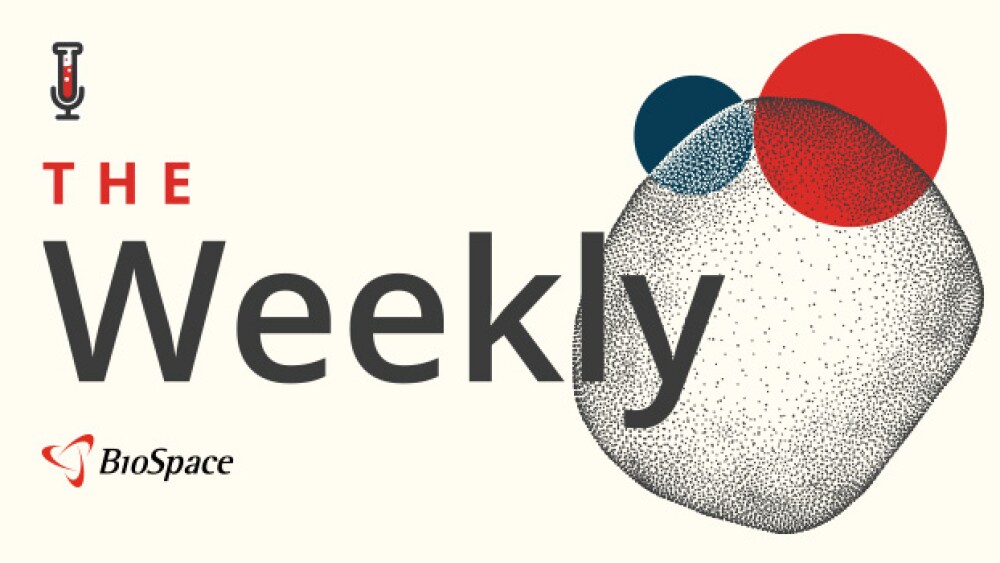Numerous top biopharma executives met recently in Manalapan, Florida for the R&D Leadership Summit. Although a wide range of topics were discussed, certain areas rose to the top as being of particular concern to industry leadership. Here’s a look at a few of those concerns.
Numerous top biopharma executives met recently in Manalapan, Florida for the R&D Leadership Summit. Although a wide range of topics were discussed, certain areas rose to the top as being of particular concern to industry leadership. Here’s a look at a few of those concerns.
Federal Actions on Drug Pricing
It should come as no surprise that the industry is concerned about what the U.S. government may or may not do about regulating drug prices. It will become an increasingly hot topic as the 2020 U.S. presidential election heats up. On February 27, seven biopharma executives, AbbVie’s chief executive officer Richard Gonzalez; AstraZeneca’s CEO Pascal Soriot; Sanofi’s CEO Olivier Brandicourt; Merck & Co’s CEO Kenneth Frazier; Pfizer’s CEO Albert Bourla; Johnson & Johnson’s Jennifer Taubert, who is executive vice president; and Bristol-Myers Squibb’s CEO Giovanni Caforio, testified before the Senate Finance Committee on the topic.
The hearing was often contentious, especially on the part of some Democrats, such as Senator Ron Wyden (D-Ore), who attacked Pfizer and Merck, saying, “Pfizer gets first prize for the emptiest gesture on drug pricing in 2018. Merck gets second prize,” saying that Merck left its “cash cows” like cancer drug Keytruda and diabetes drug Januvia untouched when it lowered some prices.
Building Manufacturing Capacity
As demand for pharmaceuticals grows, particularly the newer biologics, and gene and cell therapies, the industry is looking at ways to grow manufacturing capacity. This was marked by two recent stories. First, bluebird bio, headquartered in Cambridge, Mass., opened its new gene therapy factory in Durham, NC. The plant will produce lentiviral vectors for its gene and cell therapies, including bb2121 and bb21217 for multiple myeloma and potentially LentiGlobin for transfusion-dependent beta-thalassemia (TDT) and sickle cell disease.
The second story was on March 25, with Thermo Fischer Scientific buying Brammer Bio for $1.7 billion. Brammer is a contract development and manufacturing organization (CDMO) focused on manufacturing viral vectors for gene and cell therapies. A recent industry report indicated there are almost 300 gene therapies being developed to treat more than 100 diseases. “Gene therapy is an area of increasing focus for our customers and is fast-evolving given its potential to treat a range of genetic disorders,” stated Marc N. Casper, president and chief executive officer of Thermo Fisher Scientific.
Innovative and Value-Based Drug Pricing
There was quite a bit of discussion on the adoption of value-based pricing, one of the drug pricing models some biopharma companies are experimenting with. Per Rob Wright’s column in Life Science Leader: “Many in healthcare have been advocating for the adoption of value-based pricing. But even that model comes with concerns. ‘When you build a model that relies on 100 assumptions, and you change any one of them a little bit, the value price changes by two-fold,’ expressed one RDL attendee. ‘There is a fallacy in the thinking that value-based pricing is based on some sort of science.’”
One company that has discussed a possible value-based scheme of sorts is bluebird bio. Although the drug has not yet been approved or a price set, the company’s LentiGlobin, a gene therapy for TDT, could have a price as high as $2.1 million. At the January JP Morgan Healthcare Conference and in a Wall Street Journal article, company CEO Nick Leschly floated a multi-step plan to spread payments out over five years with each annual payment from health plans contingent on the gene therapy’s continued effectiveness.
The Cost of Innovation
This is a common theme in biopharma when the issue of drug pricing comes up. Drug development is not only expensive, but it’s very high risk. There is a feeling among many in the industry that threats to profits are a threat to innovation. Wright wrote, “While innovation in biopharma remains critical, the backlash over drug pricing makes one wonder if patients (and payers) can afford the innovations biopharma seems capable of delivering. For example, Spark Therapeutics’ FDA approval of Luxturna holds the potential to be curative for patients with inherited retinal diseases (IRD), a rare blinding condition caused by mutation of biallelic RPE65 genes that frequently affects children and young adults.”
But there are only about 10 to 20 new cases of the disease in the U.S. each year. It’s a huge medical breakthrough, but there are so few patients that benefit it comes with a list price of $425,000 per eye to cover the cost of R&D. “Is it worth it?” Wright ponders. “Most would likely say yes. But we can’t ignore the economic reality that $85,000 is roughly $10,000 more than the average U.S. household’s annual income.” And that’s only 10 percent of the cost of the therapy.
An Alzheimer’s Moon Shot
In 2016, when Congress passed the 21st Century Cures Act, it authorized $1.8 billion in funding for the Cancer Moonshot over seven years. The goal was to accelerate cancer research to make more cancer therapies available to more patients, while also improving cancer therapies and early-detection technology. Some at the conference expressed concern over the overall priority position, noting that the industry already has a major focus on cancer. What the U.S. and world really need is an Alzheimer’s Moon Shot.
This was undoubtedly sparked by the news on March 21 that Biogen and its collaboration partner, Tokyo-based Eisai, were discontinuing the global Phase III clinical trials, ENGAGE and EMERGE, of aducanumab in patients with mild cognitive impairment from Alzheimer’s and mild Alzheimer’s dementia. Biogen was also discontinuing the EVOLVE Phase II trial and the long-term extension PRIME Phase Ib trial of aducanumab. The drug was considered by many to be the last big hope for an Alzheimer’s breakthrough, although it wasn’t without its skeptics. But an independent data monitoring committee found that the drug probably wouldn’t hit the primary endpoint.
Although plenty of companies are continuing work on Alzheimer’s, there’s no doubt that the number of drugs—over 140—that have failed in clinical trials for the disease is a daunting prospect. But as Baby Boomers age, the number of Alzheimer’s patients is going to place an enormous strain on the healthcare system. As one individual said at the summit, “If we don’t deal with the tens of millions of people who are going to have Alzheimer’s in a couple decades … boom!”
Overall Concerns About the Government
And as most of these suggest, there’s an overall concern about what the federal government may do and how it will not only affect the bottom line, but the industry’s ability to develop cutting-edge drugs and therapies.
Wright observed, “It is clear that those who work in biopharma R&D aren’t lacking in passion for what they do. But, again, it was also clear from this exchange that there is tremendous fear of government intervention. Attendees were afraid that the government will focus only on addressing drug pricing, while not attempting to fix the overall healthcare system. Doing so will not only kill innovation, it will actually kill the U.S. biopharma industry as we know it, and there is speculation that China will be all too happy to fill such a void.”





